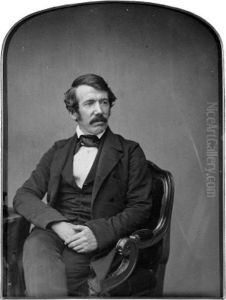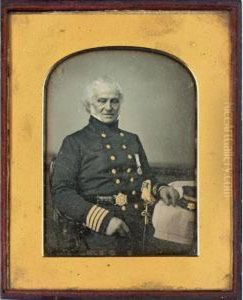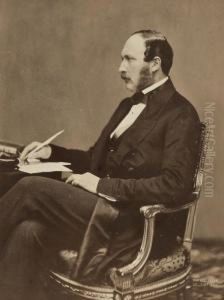John Jabez Edwin Mayall Paintings
John Jabez Edwin Mayall was a British photographer and one of the pioneers in the development and popularization of photography during the Victorian era. Born on September 17, 1813, in Oldham, Lancashire, England, Mayall initially pursued a career outside of photography, showing interest in a variety of subjects including chemistry and art.
Mayall moved to the United States in the early 1840s, where he became involved with the daguerreotype process, the first publicly available photographic process, after seeing some of the earliest examples of daguerreotypes. He studied this new art in Philadelphia under the tutelage of Paul Beck Goddard, a chemist who had improved the daguerreotype process. By 1842, Mayall had opened his own daguerreotype studio in Philadelphia, becoming one of the early professional photographers in America.
In 1848, Mayall returned to England and continued to work with daguerreotypes. He opened a studio in Manchester and later moved to London, where he established a successful portrait studio in Regent Street. Mayall became well-known for his portraits of royalty and notable figures of the time, including Queen Victoria, Prince Albert, and Charles Dickens. His work contributed significantly to the public acceptance of photography as a legitimate form of art and documentation.
Mayall was also involved in the early use of photography to reproduce works of art, which was an important step in the democratization of art ownership and appreciation. He was a member of the Photographic Society of London, which later became the Royal Photographic Society, contributing to the advancement of photographic techniques and standards.
Throughout his career, Mayall was an innovator, experimenting with color photography and stereoscopic images, which were early forms of three-dimensional photographs. His contributions to the field of photography were not limited to portraiture; he also captured events such as The Great Exhibition of 1851.
John Jabez Edwin Mayall continued to work until his later years, and he passed away on March 6, 1901, leaving behind a legacy as one of the Victorian era's most significant photographers, whose work helped to shape the future of the medium.


